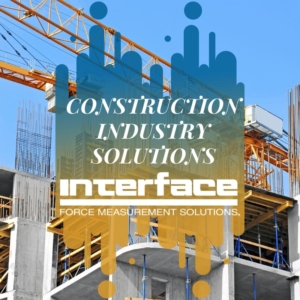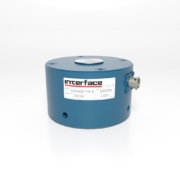Force Measurement Solutions for the Construction Industry
 In the world of heavy machinery, the ability to protect these investments is critical to an efficient and cost-effective worksite. This is especially true in the construction industry, where any type of damage or disruption to onsite equipment can significantly delay project timelines and cost a construction company hundreds of thousands of dollars, or more.
In the world of heavy machinery, the ability to protect these investments is critical to an efficient and cost-effective worksite. This is especially true in the construction industry, where any type of damage or disruption to onsite equipment can significantly delay project timelines and cost a construction company hundreds of thousands of dollars, or more.
Protecting equipment is important in the industry; however, the safety of people is paramount. Severe failures of the equipment can be dangerous to machine operators. One way construction companies are protecting people and their material investments is through the use of force sensor technologies with Interface’s precision load cells, torque transducers, load pins, tension links and load shackles, as well as data acquisition instrumentation.
The use of force measurement is a growing trend in construction because companies realize that they can use force sensors to track performance data on a wide variety of heavy machinery. This data can inform machine operators when they were pushing the machines past their respective limits.
Applications of Force Measurement Products Used in the Construction Industry
One of the key use cases of force sensors used in the construction industry is on heavy machinery attachments. Construction sites frequently utilize a crane, which is used to lift large bundles of material such as wood or steel with a grabbing type attachment, or used to transport construction workers to large heights with a basket or platform attachment.
For cranes outfitted with a lifting attachment such as a claw, a tension sensor can be used on the pulley mechanism to measure the weight lifted by the crane. The tension sensor can provide real-time data to the construction crew to help monitor the lifting process and provide the operator with the information necessary to refrain from lifting weights that are too heavy for the crane to handle. If the claw arm lifts more than the crane is able to withstand, the attachment could break off, or worse, the crane could topple over.
Another example of a crane attachment that can benefit from a force measurement sensor is the basket or platform type attachment used to transport workers to great heights. In this use case, a rotary actuator between the basket attachment and crane can be outfitted with a pressure transducer. This type of sensor will help measure the force placed on the attachment point to help rotate the basket in multiple directions and provide force data to ensure the basket isn’t over-rotated or carrying too much weight.
The final example of sensor technology used in construction is with a smart clamp. This is a use case that can be seen in multiple industries, in addition to the construction industry. A smart clamp, or soft-touch clamp, uses a compression load cell attached to a gauged piece of metal on both ends of the clamp. The clamp attachment is often placed on the end of a forklift type machine and used to transport delicate materials, packages, and other materials.
The compression load cell works by providing data back to the operator, letting them know how much force can be used to grab the object without breaking it. This used case is often found in the consumer packaging industry but can also be applied to the construction industry when transporting delicate building materials.
For many years, construction companies used this type of equipment and heavy machinery without the use of force sensors, making it harder to keep the equipment and workers safe. Today, more companies that develop attachments and heavy machinery have begun exploring force sensors to optimize the use of these machines. This creates a safer, more efficient and cost-effective environment for construction companies and protects their workers.
To learn more about specific construction industry use cases, review our detailed application notes below:
Interface is engaging with a number of customers in these industries to develop solutions to keep equipment safe and performing at optimal efficiency. To learn more about how force sensors can be used to protect your investments, contact our specialized application engineers and representatives of Interface products and solutions.
Contributor: Dan McAneny, co-founder and sales engineer at Tritek Solutions, one of Interface’s sales representatives covering the Pacific Northwest.









